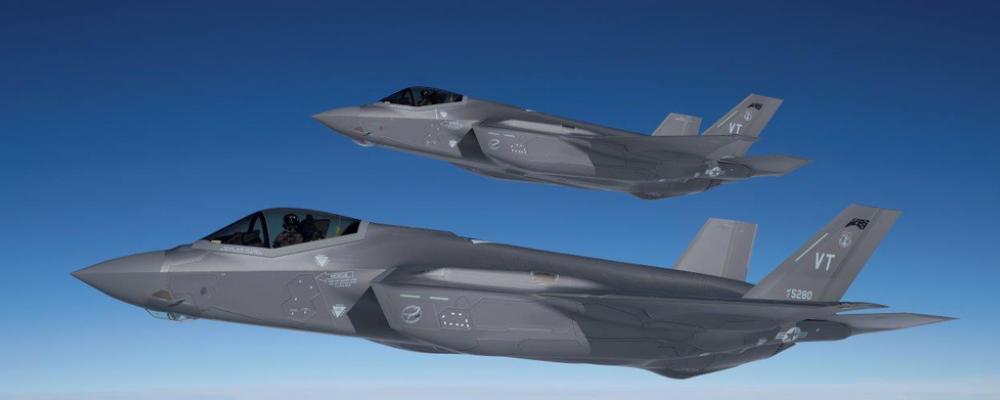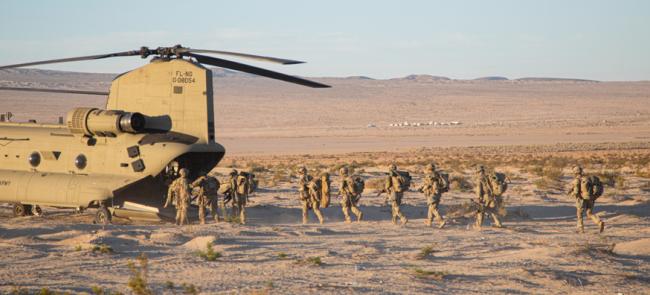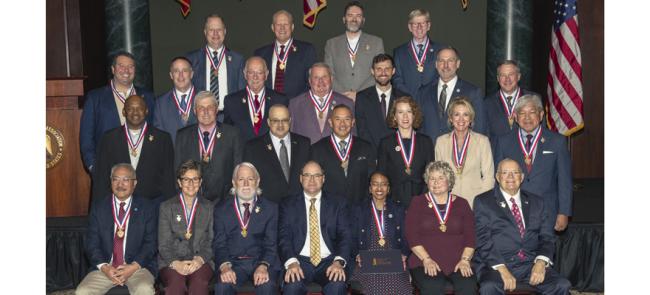
Lightning Strikes
The world's most advanced fighter is on its way to becoming a fixture in the Air National Guard.
Vermont’s 158th Fighter Wing went first, completing its formal conversion to the F-35A Lightning II in December.
Two more wings are preparing to receive the fifth-generation aircraft next year. Alabama’s 187th Fighter Wing and Wisconsin’s 115th Fighter Wing, like the 158th FW, will convert from the F-16 Fighting Falcon. A fourth unit, Florida’s 125th Fighter Wing, will follow in 2024, switching from the F-15 Eagle.
Within a few years, all four wings will have transformed their operations, their local economies and U.S. air dominance against rivals like China.
“The F-35 is the most advanced multirole fighter aircraft in the world,” says Maj. Gen. Paul E. Knapp, the adjutant general of Wisconsin, who has flown several aircraft in his career, including fighters. “It will allow us to compete on the international stage with anyone out there when it comes to combat aviation.”
It also keeps the Air Guard, which has hundreds of legacy fighters the Air Force wants to retire soon, in the fight long term.
The 158th FW was the trailblazer, receiving its 20th — and final — F-35 in October 2020. The wing’s and the Guard’s first Joint Strike Fighter arrived to great fanfare at Burlington International Airport in September 2019.
The conversion to operational status after the first aircraft arrived took about two years, which was expected. But preparing unit personnel and facilities began well before that. The entire process provided plenty of lessons learned for the other three units.
“I’m a little surprised at the sheer amount of work that conversion actually does take from start to finish,” admits Col. Bart T. Van Roo, the 115th FW’s commander.
These conversions have implications reaching beyond the Guard militarywide.
“The F-35 is the present and the future of tactical aviation for the U.S. military,” says Diana Maurer, the director of the Government Accountability Office’s Defense Capabilities and Management team.
Maurer estimates the F-35 program costs $1.7 trillion, with roughly $1.3 trillion coming from sustaining the platform’s expected 66-year lifespan.
The Navy and Marines also fly variants of the aircraft, which is why it’s also called the Joint Strike Fighter.
In April, a GAO report projected each F-35A, the Air Force variant designed for conventional runway takeoffs and landings, will cost about $78 million by 2023.
What makes F-35 price tag so high? The answer is capabilities revolutionizing aerial warfare.
“It is literally like comparing a flip phone to an iPhone 13,” says Col. Douglas D. DeMaio, the 187th FW’s commander. “It can see first and act first far more easily than the F-16.”
This is enabled by the F-35’s low-observable stealth coating, which shields the F-35 from hostile detection tools like radar.
“Our ability to get in undetected against systems is probably the core most important capability,” Van Roo says.
Advances in Chinese and Russian anti-aircraft systems mean many legacy fighters will have difficulty surviving in the contested airspace of a conflict with near-peer competitors.
It is literally like comparing a flip phone to an iPhone 13.
—Col. Douglas D. DeMaio, the commander of the Alabama Air National Guard's 187th Fighter Wing
The F-35 also has an internal system designed to constantly monitor the aircraft. It’s supposed to enable the planes to self-diagnose maintenance needs and even identify needed parts in the supply chain.
Unfortunately, the Autonomic Logistics Information System doesn’t work as well as intended, but the Air Force and Lockheed Martin are resolving the bugs, according to officials.
But the world’s most advanced fighter requires specially trained pilots and maintainers along with facilities unneeded for fourth-generation aircraft.
Maj. Gen. Gregory C. Knight, Vermont’s adjutant general, notes the conversion generated approximately $250 million in military construction projects, most of which went to local firms.
In Wisconsin, Knapp says the 115th FW’s conversion will produce between $100 and $120 million in construction at Truax Field in Madison. The first of the wing’s 19 F-35 construction projects, a flight simulator facility, began in August 2021.
“That is one of the first steps to getting the F-35 — having that simulator building operational so we can start training our pilots prior to the arrival of actual airframes,” Knapp says.
While DeMaio notes the MILCON at Dannelly Field in Birmingham will bring $100 million in economic impact to Alabama, he says the construction effort is journey’s hardest part.
“If you think about the post-COVID supply chain environment, combine that with the inflationary pressures that we have right now and the demand for raw materials,” he says. “Our goal is to be on time, and we’re doing this with the help of everybody in the state.”
Like the 115th FW, one of the 187th FW’s first construction projects is a simulator facility. The 125th FW isn’t far behind. There is $22.2 million in the president’s fiscal 2023 budget request for a simulator building at its base at Jacksonville International Airport.
Additionally, officers and airmen at the 115th and 187th have begun training to receive the F-35. DeMaio says his F-16 pilots need to take a three-month “conversion” course to learn the new aircraft while those fresh out of pilot school require six to 12 months training.
In May, the 158th FW became the first Guard unit piloting F-35s overseas by entering Europe.
Stateside, the 158th FW is a model for successfully adding F-35s. Knapp credits the 158th FW with teaching Wisconsin’s Air Guard about communicating with citizens.
Some Madison residents have expressed concerns about the noise levels and impact of basing the F-35s there. In March, one group, Safe Skies Clear Water Wisconsin, submitted a complaint to the Environmental Protection Agency seeking the agency’s intervention in conversion.
Knapp says the 115th FW is emulating the 158th FW’s outreach on similar subjects for soothing public fears.
“One of the biggest things that Major General Knight has recommended is that we have this open dialogue with the local community and make sure we’re acknowledging their concerns,” Knapp says.
Knapp pledges the 115th FW will reduce the F-35’s volume by using afterburners rarely, the same tactic the 158th FW uses in Vermont to reduce noise levels.
Whether Burlington, Madison or Montgomery, officials from each F-35 wing described swapping and educating talent to finish the aircraft’s conversion.
Take maintenance and piloting — DeMaio notes the 187th FW has a flight lead and several maintainers training with the 115th FW in Burlington. The 115th FW has sent crew chiefs there to train and learn.
Col. David W. Shevchik, Jr., the 158th FW’s commander, urges the wings converting to the F-35 to rely on their partners across the military.
“You definitely have to embrace the mission and the mindset and the change, because it’s an important one,” he says.
Mark Hensch is the NGAUS senior writer/editor. He can be reached at [email protected].
AT A GLANCE: F-35A Lightning II
PRIMARY FUNCTION: Multirole stealth fighter
PRIME CONTRACTOR: Lockheed Martin
HEIGHT: 14 feet
LENGTH: 51 feet
WINGSPAN: 35 feet
POWER PLANT: One Pratt & Whitney F135-PW-100 turbofan engine
SPEED: Mach 1.6 (1,200 mph)
RANGE: More than 1,350 miles with internal fuel, unlimited with aerial refueling
CEILING: Above 50,000 feet
ARMAMENT: Internal and external capability. Munitions carried vary based on mission requirements.
CREW: One
ENTERED AIR FORCE SERVICE: 2016
SOURCE: Air Force



